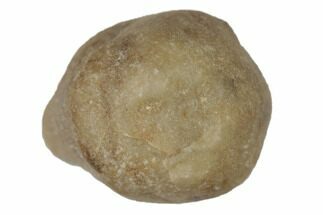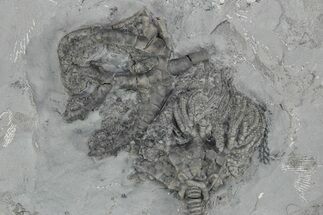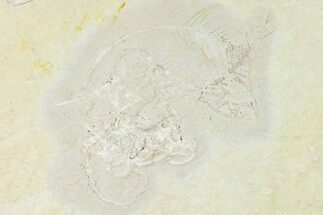This Specimen has been sold.
Echinoderm Plate (Blastoids & Crinoids) -Missouri
This is a cool plate of Mississipian aged echinoderm fossils from Missouri. There is a Uperocrinus (crinoid) calyx along with a pair or Cryptoblastus (blastoids) mounted on a slab of rock full of crinoid stem pieces from the same location.
Blastoids are an extinct type of stemmed echinoderm related to crinoids. They would have attached themselves to the bottom of the ocean with an stalk and were filter feeders. The body, or theca, of blastoids resembles an acorn and is composed of interlocking armored plates. They first appeared in the Ordovician period, and reached peak diversity during the Mississipian before going extinct in the Permian extinction.
Crinoids, sometimes commonly referred to as sea lilies, are animals, not plants. They are echinoderms related to starfish, sea urchins, and brittle stars. Many crinoid traits are like other members of their phylum; such traits include tube feet, radial symmetry, a water vascular system, and appendages in multiples of five (pentameral). They first appeared in the Ordovician (488 million years ago) and some species are still alive today.
Blastoids are an extinct type of stemmed echinoderm related to crinoids. They would have attached themselves to the bottom of the ocean with an stalk and were filter feeders. The body, or theca, of blastoids resembles an acorn and is composed of interlocking armored plates. They first appeared in the Ordovician period, and reached peak diversity during the Mississipian before going extinct in the Permian extinction.
SPECIES
Uperocrinus longirostris, Cryptoblastus melo
AGE
LOCATION
Marion County, Missouri
FORMATION
Burlington Formation
SIZE
Plate 3x2.6"
CATEGORY
ITEM
#21110
We guarantee the authenticity of all of our specimens.
 Reviews
Reviews













